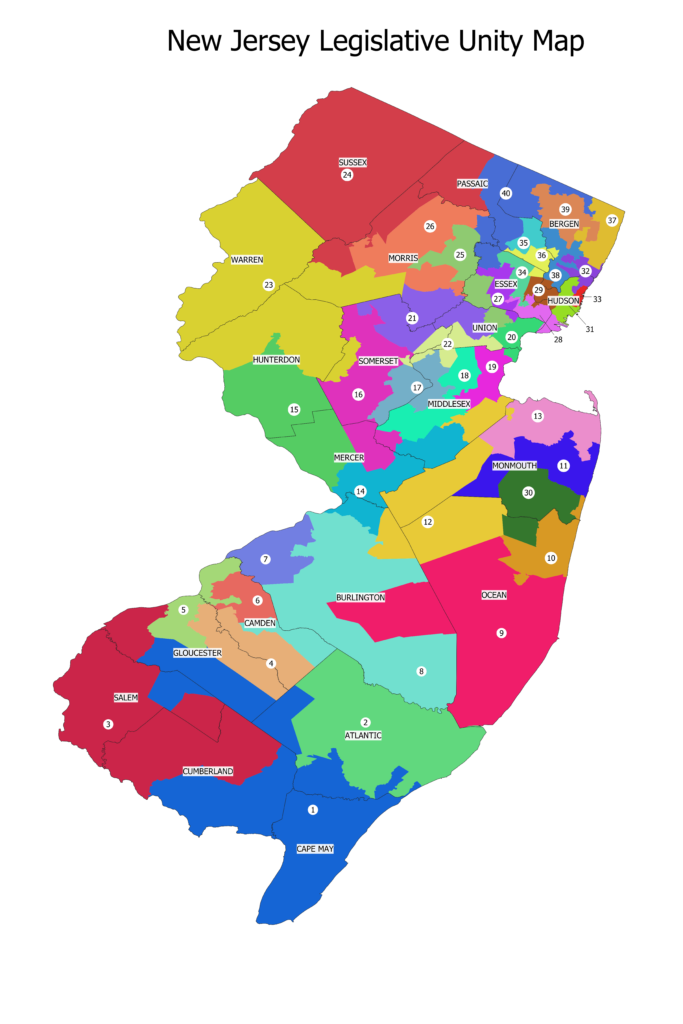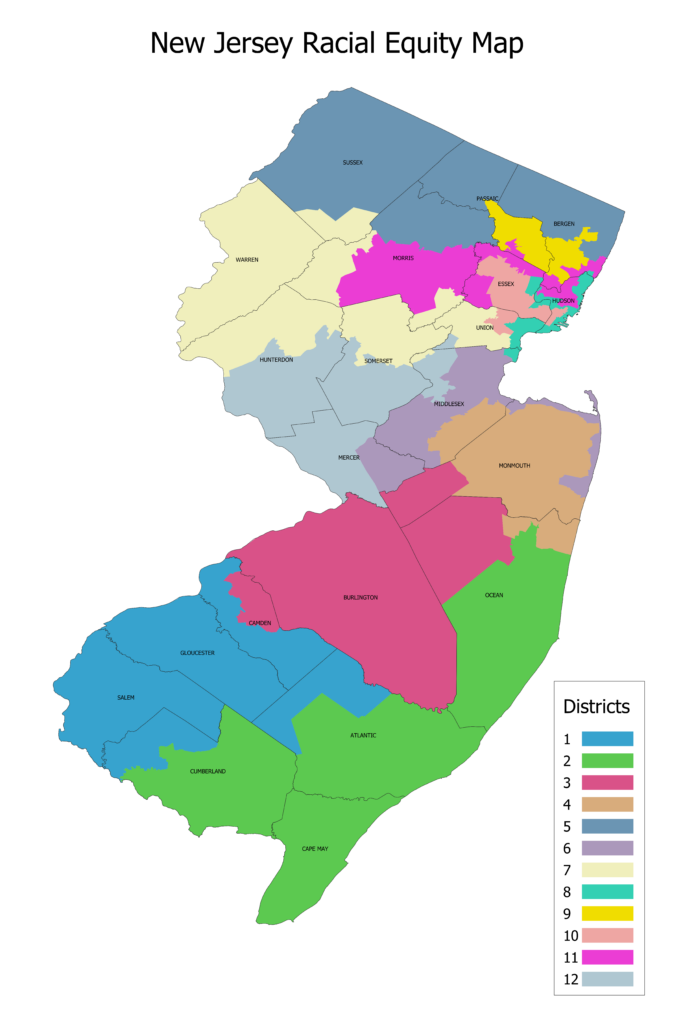Redistricting impacts who runs for office, who is elected, and especially what policies become law.
Fair maps are essential to making sure your voice is heard.
More than 48% of New Jersey’s population are people of color. In 11 out of 21 counties, the combined Black, Latina/Latino and Asian population will soon exceed 37% – which would allow for the drawing of people of color coalition districts.
People have moved in, out and around our state in the last decade.
New Jersey is not the same as it was 10 years ago.
Our maps do not reflect who we are.
We must change that.
In New Jersey, for legislative and congressional redistricting, we have bipartisan commissions – an equal number of Democrats and Republicans, with one independent tie-breaker.
Traditionally, both commissions, either because it is required by the constitution or by custom, hold three public hearings during the process.
The commissions are required to have geographic diversity in their membership.
There is no other required public participation component and no other diversity requirement in the makeup of the commissions.
All communities – especially historically marginalized communities, like Black and other communities of color – must have a voice in the process.
The Fair Districts Coalition Unity map succeeded at centering racial equity and fairly representing residents of New Jersey.
The certified 2023 Legislative map made some improvements in centering racial equity:
However, did not go as far as we would like in other areas:
More concerningly, it went backwards in one specific area:

See the newly adopted map.
How did we do?
The Fair Districts Coalition Racial Equity Congressional map succeeded at centering racial equity and fairly representing residents of New Jersey.
The certified 2022 Congressional map made some improvements in centering racial equity:
However, did not go as far as we would like in other areas:
More concerningly, it went backwards in one specific area:
5 out of 12 districts are majority people of color (CD 6, 8, 9, 10, 12)
1 out of 12 districts are influence districts (over 30% VAP) for people of color (CD 1)
6 out of 12 districts are either majority districts or influence districts for people of color (CD 1, 6, 8, 9, 10, 12)
Contains a Black VAP majority district (CD 10)
Contains a Hispanic VAP majority district (CD 8)
Does NOT contain a Hispanic influence district (CD 8)
Does NOT contain any Asian influence districts (over 20% VAP)
Meets fair redistricting principles, such as equal population, contiguity, and partisan fairness.
6 out of 12 districts to be majority people of color (CD 6, 8, 9, 10, 11, 12)
4 out of 12 districts are influence districts for people of color (over 30% VAP) (CD 1, 2, 3, 7)
10 out of 12 districts are either majority districts or influence districts for people of color (CD 1, 2, 3, 6, 7, 8, 9, 10, 11, 12)
Contains a Black VAP majority district (CD 10)
Contains a Hispanic VAP majority district (CD 8)
Contains a Hispanic plurality district (CD 9)
Contains two Asian influence (over 20% VAP) districts (CD 6 & CD 11)
Meets fair redistricting principles, such as equal population, contiguity, and partisan fairness.
5 out of 12 districts are majority people of color (CD 6, 8, 9, 10, 12)
5 out of 12 districts are influence districts for people of color (over 30% VAP) CD (1, 2, 3, 5, 11)
10 out of 12 districts are either majority districts or influence districts for people of color (CD 1, 2, 3, 5, 6, 8, 9, 10, 11, 12)
Contains a Black VAP majority district (CD 10)
Does NOT contain a Hispanic VAP majority district (CD 8)
Contains 2 Hispanic plurality districts (CD 8, 9)
Does NOT contain any Asian influence districts (over 20% VAP)
Meets fair redistricting principles, such as equal population, contiguity, and partisan fairness.

Download a full pdf copy of the Racial Equity Congressional Redistricting Map.
Download the shape files or a CSV copy.
(Note: mapping software may be required)
See our PlanScore!
Read our Communities of Interest Report.
See the newly adopted map.
The organizations supporting this map include the Association of Black Women Lawyers – NJ; Fair Share Housing Center; Faith in New Jersey; the Inclusion Project at Rutgers Law School; Good Government Coalition of New Jersey, Latino Action Network; Latino Coalition of New Jersey; League of Women Voters of New Jersey; Make the Road New Jersey; NAACP New Jersey State Conference; New Jersey Alliance for Immigrant Justice; New Jersey Appleseed; NASW-NJ; New Jersey Black Issues Convention; New Jersey Citizen Action; New Jersey Institute for Social Justice; New Jersey Working Families; SALDEF; Salvation and Social Justice; SOMA Action and United Black Agenda (the “Racial Equity Map Coalition”).